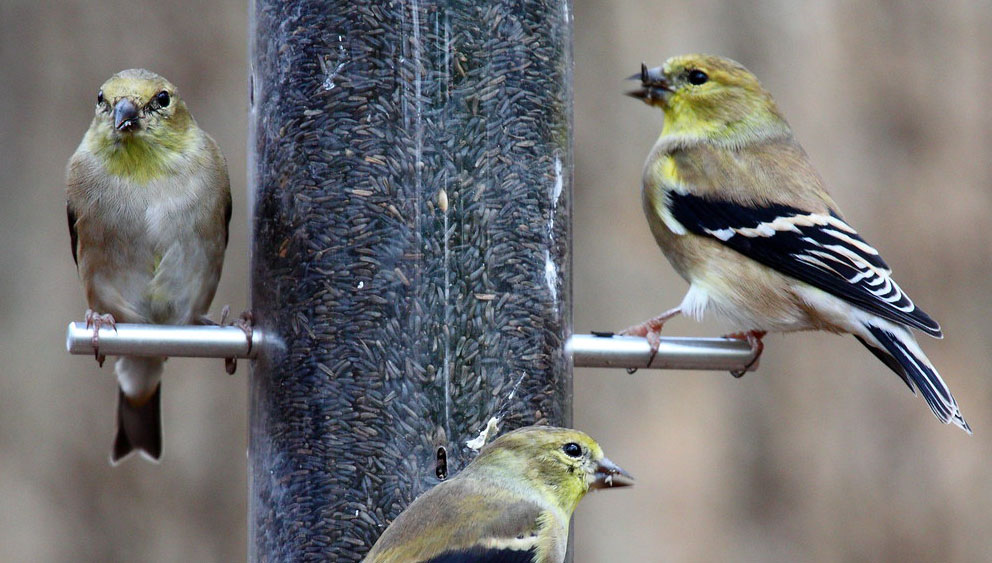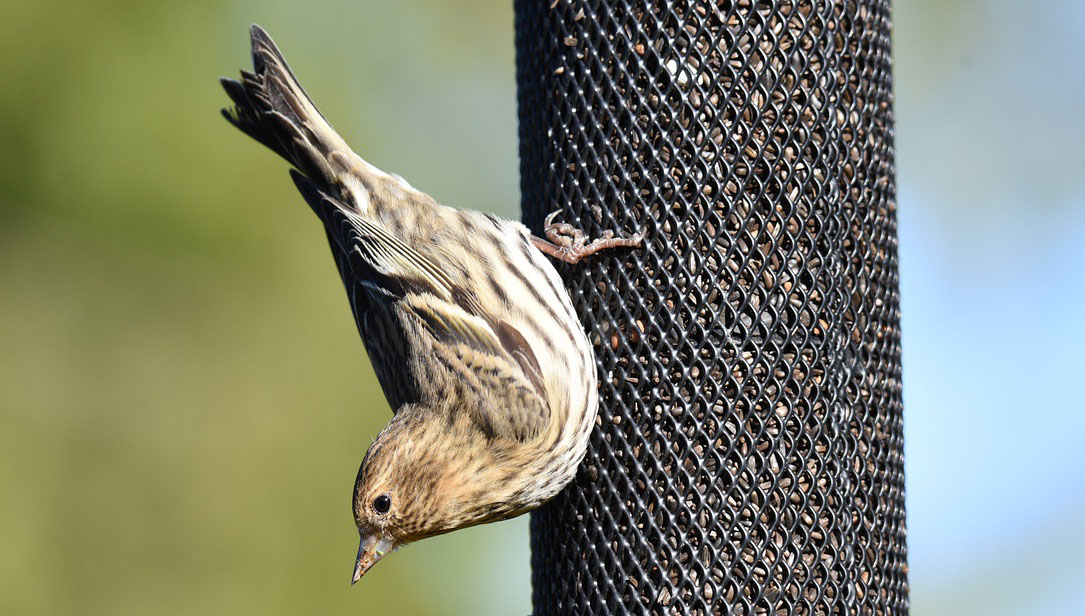In the Winter of 2020-2021, cases of Salmonella were impacting some wild bird species, specifically Pine Siskins and other finches. In California, areas in the Bay, Central Coast, and Sierra Nevada were effected, however, in Southern California, there are no reports of Salmonella cases due to wild birds. Regardless of where we live, it is always within our best interest to provide a clean and safe feeding area for our feathered friends, thus preventing the spread of any type of bacteria or disease.
Below are FAQS about Salmonella and how to keep your feeders Salmonella-free. Our information comes from the article “Preventing Salmonella at Bird Feeders” published by the Wild Bird Feeding Institute. Read the full article here.

What is Salmonella?
- Salmonellosis is a disease caused by the bacterium Salmonella enterica. This naturally occurs in the digestive tracts of a broad range of animals, including cattle, pigs, poultry, and wild birds.
How do wild birds get Salmonella?
- Salmonella outbreaks are a natural, common occurrence in bird populations especially during the winter months.
- Salmonella is spread by contact with the bird droppings of an infected individual.
- Because of colder climates and limits in food resources, wild birds with poor body conditions are more susceptible to getting infections.
- Species that gather in large groups (like Pine Siskins) allow for a higher rate of disease spreading within the flock.
How do humans get Salmonella?
- Typically, human infections are linked to contaminated meat products and produce. In humans, Salmonella symptoms include diarrhea, fever, and stomach cramps.
- In this case, Salmonella can be transmitted by touching an infected wild bird or something in its environment, and then touching your mouth or face with unwashed hands.
How likely is it to get Salmonella from wild birds?
- Contact with a pet turtle is a common root of non-foodborne Salmonella infections. Infection from a turtle is more likely than one linked to exposure of wild bird feces at a feeder.
What are the signs of Salmonella in wild birds?
- Fluffed up feathers
- Sunken or closed eyes
- Lethargic behavior in comparison to other birds
- An infected bird will be less likely to fly away if approached
- Dead birds will show signs of a pasted cloaca or white substances around the mouth.
How do I to prevent Salmonella at bird feeders?
If you live in an area with reports of a Salmonella outbreak:
- Clean feeders several times a week. Feed wild birds with backup feeders while cleaning your primary feeders.
- Rake underneath feeders or move feeders to a new location to reduce the build-up of bird droppings.
- Clean birdbaths to prevent the buildup of bacteria and residue.
- Temporarily remove feeders if they allow for contact between bird food and feces. (Like platform feeders.)
- Keep cats indoors. If a cat catches a bird with Salmonella, it can expose the cat and owner to the infection.
If there are no outbreaks in your area, and you are not seeing any sick birds, still be sure to clean your feeders every week or two. Read about bird feeder cleaning dos and don’ts for some useful tips and tricks.
How do I properly dispose of a dead bird with Salmonella?
- Wearing plastic gloves, put the bird in a sealable plastic bag and throw it away in a sealed trashcan.
- Afterward, be sure to thoroughly wash your hands.
Chirp is here to help better your backyard birding, connect with nature and support the declining bird population. Learn how to fix these 5 common bird feeding mistakes, keep birdseed fresh, and prevent birds from pecking your house. Be sure to sign up for our newsletters to receive even more helpful articles, deals, and event information.


